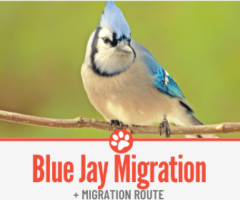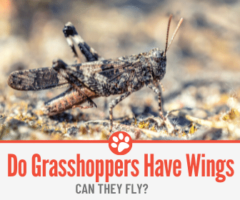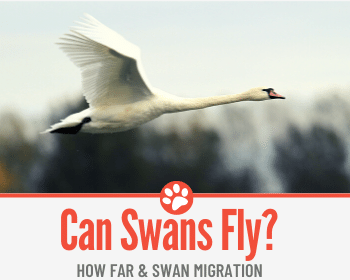 Since Greek mythology, swans have been the representation of beauty and seduction.
Since Greek mythology, swans have been the representation of beauty and seduction.
While the beauty of these majestic animals is undeniable, there has always been some questioning around them being able to fly.
Can Swans Fly?
Yes ,Even though they are water birds, swans can actually fly; and as graceful as swans are in the water, they sure are in the sky. In fact, they are one of the heaviest and fastest flying waterfowl. However, some swan species, like black swans, do not fly long distances.
The mystery behind the migration and flying details of these fairytale creatures took half a century for bird watchers and scientists to discover, so keep reading to find more about it!
Even if they can, Do Swans actually Fly?
Swans belong to the Anatidae family, making them close relatives to ducks and geese. These long-necked water birds can measure up to 64 inches and weigh up to 26 pounds, which makes them one of the heaviest and largest birds.
No wonder why their flight abilities have always been questioned!
It’s funny because, actually, swans’ entire body structure was designed to fly. For starters, such enormous birds require having strong but hollow bones that make them as light as possible to set off the ground; these bone structures also help them move faster in water.
Asides from hollow bones, the fact that swans have a gizzard–an organ in their stomach, which helps them grind food- instead of teeth and a heavy jaw, reduces the bird’s weight.
Feathers provide flight control and a powerful surface to push against the air while flying. Swans have around 25,000 feathers, which grow in specific areas called feather tracks; helping them maintain their body weight down.
Waterfowl have a special feather arrangement that allows them to have better resistance against the air.
These majestic creatures have also been equipped with a breathing system that allows them to breathe 10 times faster than mammals, required to administrate the correct doses of oxygen to keep their muscles functioning in the air.
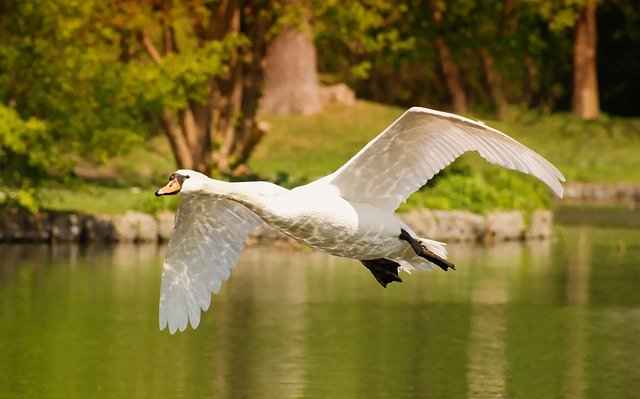
Do Swans Migrate?
They do. During late autumn and early spring most bevy- how a group of swans in flight is called- will travel in search of warmer climates and food supplies.
Their migration patterns have most to do with their breeding and nesting behaviours. You see, swans’ mating for life is not a myth at all, and although divorce might happen, chances are they will end up migrating together in a search for a better place to nest.
Those unpaired adults and non-breeding swans will spend their summer together in warm and well-supplied places.
The courtship of young adults begins in winter and continues during spring migration (mid-may) where they will spend most of their summer nesting and taking care of their cygnets by early July.
The newborns will need some time to fledge; in the meantime, adults undergo a period where they shed their feathers, leaving them flightless for a month.
By early September, the proud new parents and their strong and fledged offspring will meet the others and begin their journey back home before the temperatures drop and lakes freeze.
Swans usually migrate in flocks composed of over 100 members of their family, and they do it in a V-shaped formation led by a leader who pushes through the air to make flying easier for the rest of the flock. Swans take turns to lead the flock when another one gets tired.
It is commonly said that swans migrate mostly during the night, and while this has not been a hundred percent corroborated, one thing is for sure, they are one heck of a spectacle to watch.
As a biologist at the Wilderness Society, Jay Sheppard, would describe it:
“If you see a migrating flock of them on a clear, cold night, they are like graceful ghosts against a full moon.”
Do Swans Fly Long Distance
As Nancy M. Kendall explains in her article for The Christian Science Monitor, around 1915, bird watchers starting putting colored rings on swans’ feet to study them and answer the same question: They wanted to know where and how far they could travel.
Half a century later, swans began to be banded with rings equipped with radio transmitters that allowed them to track them. Now a day, we know that some swan species can fly up to 4,000 miles in one trip.
Swans can fly at an altitude of 6,000 – 8,000 feet, from 20 to 60 miles per hour, depending on their species. Whooper swans beat the record above all others by being spotted flying over Northern Ireland at 27,000 feet.
How Often Do Swans Fly
Swans can start flying three or four months after being hatched, and as soon as they are ready, they will join their flock to migrate twice a year where they will start learning the migration routes from their parents.
Even though swans spend most of their time in the water or around wetlands, swans are not sedentary and even the non-migratory species will fly whenever they need to find better weather conditions and food resources.
I found out that Trumpeter swans give their flock a pre-flight signal by bobbing their head and extending their long necks forward.
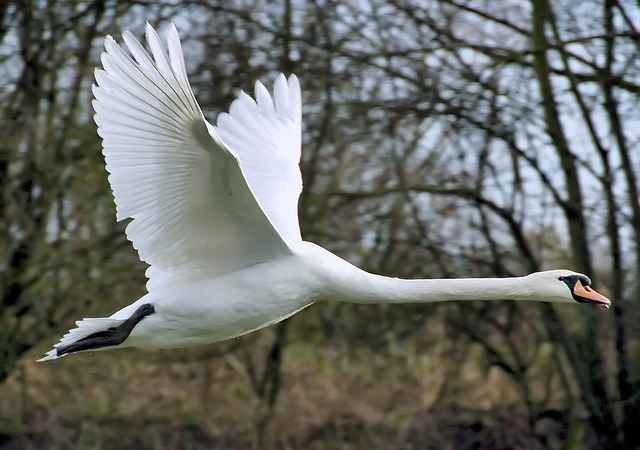
Where do Swans Fly in the Winter
Most swan species of swans are migratory, while a few others are partial migrants, but the migration routes, heights, and speed depend on each swan’s species.
There are five to six known swan species around the globe:
- Mute Swans: The main character of many fairytales and ballets would be this exact white-feathered creature, easy to identify thanks to their orange-colored beak contoured in black. They live in Central Europe, Central Asia, the United Kingdom, and some regions in North America; and in winter they usually migrate towards North Africa, India, and Korea. Mute swans need to run in water to take off and can fly up to 50 miles per hour.
- Black Swans: These graceful and mystical creatures are native to Australia, but can now also be found in North America, New Zealand, and some regions in Europe. As their name suggests, they are covered in black feathers and have a bright red/orange beak- although their flying feathers are white. They are one of the few swan species that does not migrate, however; they are known nomads which means they won’t ever stay at the same place for a long time.
- Whooper Swan: They are also known as common or wild swans. They are white-feathered, have black legs, and unique yellow and black beaks that can actually tell them apart. Whooper swans migrate up to 1,400 km in between Great Britain, Ireland, and Iceland; making them the swan species who perform the longest sea crossing. They can travel up to 620 miles in 12 hours flying at 55 miles per hour at an altitude of 8,000 meters.
- Trumpeter Swan: They are the largest North American swans, measuring up to 6 feet, and have v-shaped black beaks and snowy white feathers. Trumpeters can be found in the Northern United States, Canada, and Alaska, and they migrate short distances South to North Dakota, Arizona, or Nevada. Their flight speed is 25 to 60 miles per hour.
- Tundra Swan: A large, snowy-feathered swan, with a black bill and a tiny yellow spot at the base. They live in Canada and Alaska and migrate south in the winter to North America’s coastlines. Tundra swans fly around 3,725 miles in total, at 60 miles per hour, around 6,000 to 8,000 feet high.
Swan’s wingspan
The maximum extent of each swan’s wings will depend on their size and species.
The mute swan’s wingspan is 2 to 2.5 meters, while the black and tundra swans’ are only 1.6 to 2 meters. Trumpeter swans might have the longest by being able to extend their wings up to 3.1 meters, followed by the Whooper swan whose wingspan is of 2.8 meters.
Related Questions.
Can English Swans Fly? – Yes. England is home to three of the main swan species: Whooper, Mute, and Bewick’s, which are considered the Eurasian race of the Tundra swan, with whom they share most characteristics. All three species can fly and are fully migratory.
Do Swans Have Tails? – They do, and it has a very important function in their body. Among other functions, at the base of a swan’s tail, an oil-producing gland is located which helps keep their feathers waterproof.
Can Black Swans Fly Far – Since black swans are non-fully migratory species, the exact number is unknown, however, it is known that they are slow flyers. They have a slow wing beat and fly with their necks outstretched.

